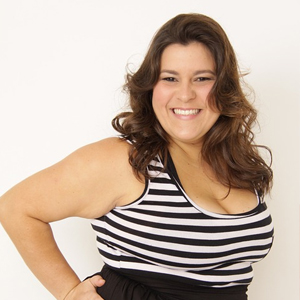Resolution of Chronic Headaches and Neck Pain with Chiropractic
From the May 11, 2017, edition of the Annals of Vertebral Subluxation Research comes a case study of a woman who had been suffering with long-term headaches and neck pain being helped by chiropractic. Headaches are the most common type of pain and one of the leading reasons that people miss work.
 The Mayo clinic website defines tension headaches
by saying, "A tension
headache is generally a diffuse, mild to moderate pain in your
head that's often described as feeling like a tight band around
your head. A tension headache (tension-type headache) is the
most common type of headache, and yet its causes aren't
well-understood."
The Mayo clinic website defines tension headaches
by saying, "A tension
headache is generally a diffuse, mild to moderate pain in your
head that's often described as feeling like a tight band around
your head. A tension headache (tension-type headache) is the
most common type of headache, and yet its causes aren't
well-understood."
This study begins by noting that tension headaches are the most common type of headaches. They report that about 42% of the population suffers headaches. They also note that neck pain is also very common affecting about 70% of the population at some time. People with headaches usually have neck pain in 90% of the cases.
The study lists many types of treatments for headaches including over-the-counter or prescription pharmaceuticals, injections, physiotherapy, massage therapy, spinal manipulation therapy (SMT), and chiropractic adjustments.
Headaches are one of the more common problems that cause people to seek chiropractic. In these cases, it is often found that subluxations are present and there is an alteration to the normal forward neck curvature.
In this case, a 55-year-old woman suffering from chronic headaches, neck and shoulder pain and sinus pressure went to the chiropractor. Eight years earlier, she was involved in a car accident where she hit her head. She was also involved in a earlier accident where her head struck the windshield. After this accident, she immediately felt neck and shoulder pain. In addition to these car accidents, the woman was also struck in the face by a hockey puck that was estimated to be traveling at about 90 miles an hour. This injury required 11 sutures.
The woman had been suffering with headaches for the past 4 years. These headaches would get so bad that she described them as pounding, and often caused her to vomit. Her medical doctor told her that these headaches were caused by dust, dirt, and mold.
An examination was performed that showed elevated blood pressure, a decreased neck range of motion, and other postural irregularities. X-rays were also taken and showed a reversal of what should be a normal forward cervical curve. Additionally, an x-ray from the back of her neck showed that her head was laterally translated to her right making her head look like it had been pushed to her right side. Based upon all the findings, chiropractic care was started.
After 36 visits, the woman was re-assessed to determine the progress that had been made. She reported that her headaches were gone and that her neck pain was reduced to negligible. Her neck range of motion had also returned to normal and no longer caused pain. A follow-up x-ray from the back of the neck was performed showing that the lateral translation of her head had been corrected.
The authors summed up this case by saying, "This report documents the successful outcome in a 55-year old patient with chronic headaches as well as neck and shoulder pain with a lateral head shift posture."
 According to the American Association of Neurological Surgeons,
scoliosis affects 2-3 percent of the population. The primary age
of development is between 10 and 15 years. Scoliosis occurs at
an even rate between boys and girls but seems to be more severe
on average in girls.
According to the American Association of Neurological Surgeons,
scoliosis affects 2-3 percent of the population. The primary age
of development is between 10 and 15 years. Scoliosis occurs at
an even rate between boys and girls but seems to be more severe
on average in girls.  This study begins by discussing the importance of a normal
forward curve in the neck. A normal curve not only helps the
neck absorb shock, but helps the head be in a more normal
upright position. The authors wrote, "The loss of cervical
lordosis and anterior head posture has long been identified with
numerous significant health issues. These health issues include
cervical, shoulder, and headache pain. The loss of cervical
curvature also causes anatomical changes to the cervical spine
including a shortening of the anterior or posterior vertebral
column."
This study begins by discussing the importance of a normal
forward curve in the neck. A normal curve not only helps the
neck absorb shock, but helps the head be in a more normal
upright position. The authors wrote, "The loss of cervical
lordosis and anterior head posture has long been identified with
numerous significant health issues. These health issues include
cervical, shoulder, and headache pain. The loss of cervical
curvature also causes anatomical changes to the cervical spine
including a shortening of the anterior or posterior vertebral
column."  The authors offered a technical
explanation of epilepsy by stating, "Seizures occur as a
result of abnormal and asynchronous distribution of neuronal
electrical discharges in the brain and can result from both
increased excitatory synaptic neurotransmission or decreased
inhibitory neurotransmission."
The authors offered a technical
explanation of epilepsy by stating, "Seizures occur as a
result of abnormal and asynchronous distribution of neuronal
electrical discharges in the brain and can result from both
increased excitatory synaptic neurotransmission or decreased
inhibitory neurotransmission."  The authors of this study report that
glaucoma affects between
1% and 3.4% of the population. It is the second leading cause of
blindness, behind diabetes. Estimates are that 60.5 million
people worldwide had glaucoma in 2010, with that number expected
to rise to 79.6 million people suffering with this condition by
the year 2020. The medical approach to this problem has been
medications designed to reduce intraocular pressure.
The authors of this study report that
glaucoma affects between
1% and 3.4% of the population. It is the second leading cause of
blindness, behind diabetes. Estimates are that 60.5 million
people worldwide had glaucoma in 2010, with that number expected
to rise to 79.6 million people suffering with this condition by
the year 2020. The medical approach to this problem has been
medications designed to reduce intraocular pressure.  Although the mechanism is not medically known, head trauma may
be associated with an increase in the prevalence of Parkinson's.
It has been observed that boxers are more likely to develop
Parkinson's, such as in the case of the late boxing champion
Muhammad Ali. Standard medical treatment for this condition is only
focused toward managing the symptoms of the condition.
Although the mechanism is not medically known, head trauma may
be associated with an increase in the prevalence of Parkinson's.
It has been observed that boxers are more likely to develop
Parkinson's, such as in the case of the late boxing champion
Muhammad Ali. Standard medical treatment for this condition is only
focused toward managing the symptoms of the condition.